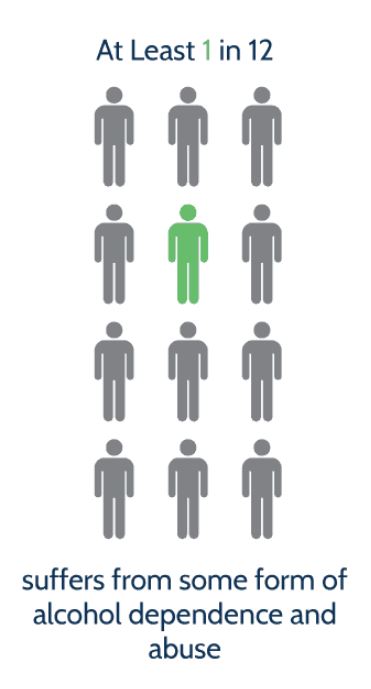Crystal Meth Side Effects: Crystal Meth Effects (Side Effects Of Crystal Meth)
Methamphetamine is a stimulant that is extremely addictive and may have lingering effects on the body. This artificial drug, which is presently used only very infrequently for severe obesity and intractable ADHD now that there are more effective prescription stimulants available, has limited therapeutic uses.
Methamphetamine in the shape of a rock-like crystal, typically a semi-transparent white or blue tint, is known as crystal meth. This substance is always prohibited and has only one use: misuse.
The majority of crystal meth is heated before being smoked in a glass pipe. The substance is usually crushed up to be snorted or administered. Smoking expedites the drug’s entry into the bloodstream, which contributes to its addictiveness.
How Crystal Meth Effects The Body (Effects Of Crystal Meth): Crystal Meth Effect
Physical Effects Of Crystal Meth: Meth abusers and addicts will show a range of behavioral and physical signs. Among the most typical meth symptoms are:
- Hyperactivity
- Twitching, facial tics, jerky movements
- Meth High Symptoms: Paranoia
- Dilated pupils
- Noticeable and sudden weight loss
- Skin sores
- Rapid eye movement
- Reduced appetite
- Agitation
- Burns, particularly on the lips or fingers
- Erratic sleeping patterns
- Rotting teeth
- Outbursts or mood swings
- Extreme weight loss
“Tweaking,” a period of anxiety and insomnia that can persist for three to fifteen days, is another obvious sign of meth use. Tweaking happens at the end of a drug binge when a meth user is no longer able to experience the rush or high.
Due to the need to use it again, tweaking can have psychological adverse effects like paranoia, impatience, and confusion. Meth-related tweaking can also lead to hallucinations and a propensity for violent conduct.
The crash phase is another indication that someone is using meth. The body is deprived of the dopamine that Meth was previously supplying during this time, which results in tremendous tiredness. Long stretches of sleep, strong drug cravings, and depression are the hallmarks of a crash, which can persist for one to three days.

Skip To:
Learn More:
- Do Crystals For Depression Work?
- Depression and ADHD: What’s the Link?
- Autism and Depression Connection, Diagnosis & Treatment
- Signs of Depression in Men, Causes, & What to Know
- Rehab for Depression & Anxiety Treatment
- What is the Best SSRI for Anxiety?
- Social Anxiety Disorder
- Grounding Techniques for Anxiety Attacks
- Mental Health Poems that are Powerful and Healing
- Short-Term Disability Mental Health
Get Help. Get Better. Get Your Life Back.
Searching for Accredited Drug and Alcohol Rehab Centers Near You?
Even if you have failed previously and relapsed, or are in the middle of a difficult crisis, we stand ready to support you. Our trusted behavioral health specialists will not give up on you. When you feel ready or just want someone to speak to about therapy alternatives to change your life call us. Even if we cannot assist you, we will lead you to wherever you can get support. There is no obligation. Call our hotline today.
(844) 597-1011Methamphetamine Factsheet
What is Methamphetamine?
Meth is a highly addictive stimulant that can cause addiction in as little as a single use. This is mainly due to the rush of dopamine produced by the drug. Dopamine is a chemical that’s not only responsible for inducing feelings of pleasure, but also for motivation, memory retention, learning, and reward processing. The rush of dopamine produced by Meth is much higher than the natural amount of dopamine that is produced in the brain, which causes people to continue using the drug in order to keep those heightened and pleasurable feelings.
Methamphetamine Effects
Abuse of methamphetamine includes any illegal usage of the drug. When smoked or injected, meth causes a “rush” similar to that experienced when using crack cocaine; this is brought on by an increase in heart rate, blood pressure, and pleasure-inducing neurotransmitters in the brain. Snorting meth produces an ecstatic feeling but not a rush.
The biggest effects are produced by the infusion rush, which can last up to 30 minutes. Depending on how the drug is used, users enjoy a sustained high that can continue anywhere between 8 and 24 hours after the first surge. Meth injection delivers a higher high than smoking or snorting it, although the high lasts less.
Street Names for Methamphetamine
Meth and Crystal Meth are chemically identical substances, despite the differences in the structural composition of the two varieties. Methamphetamine goes by the following street names:
- Glass
- Speed
- Ice
- Crystal
- Crank
- Tweak
- Redneck Cocaine
- Chalk
The vast bulk of meth that is sold today comes from imports and clandestine labs. A few people will often generate modest amounts of the material in “home labs” or “stove tops,” where the product is typically cooked. Meth is also made in cartel “super labs,” which use high-end machinery to generate the drug in greater quantities and with superior quality.
The stimulant Ephedrine or Pseudoephedrine, which is present in certain popular over-the-counter cough and cold treatments, is often the main component in meth. Meth labs are famously hazardous due to the toxic and flammable gases and chemicals generated during the production of the drug.
Methamphetamine Statistics
550 Million
Meth costs the United States $550 million in drug treatment programs each year.
Source: NIDA
16 Million
According to the 2017 National Survey on Drug Use and Health, 1.6 million people reported using Meth in the past year.
Source: NIDA
964.000 People
An estimated 964,000 people aged 12 and older qualify as having a Meth use disorder in 2017.
Source: NIDA
Effects Of Crystal Meths On The Brain (Crystal Meth Effects On Brain): What Are The Effects Of Crystal Meth?

The drug’s mechanism of action is similar to that of other stimulants in that it causes massive releases of the neurotransmitters norepinephrine and dopamine (along with other neurotransmitters) after consumption.
These releases result in a variety of extremely potent euphoric effects, increases in energy, feelings of invulnerability, and other psychoactive effects. The material is both hazardous to use and extremely combustible, making it hazardous to produce because it is frequently created with a number of other substances that are frequently potentially toxic, such as antifreeze, battery acid, or drain cleaner.
According to studies on the short- and long-term effects of methamphetamine usage, there are a number of serious potential risks involved, including serious neurological damage.
What Are The Side Effects Of Crystal Meth? Decreased Gliogenesis
The CNS has more cells besides neurons. The central nervous system is made up of a variety of additional cells that are commonly referred to as glial cells.
These cells perform a variety of functions, such as signaling, infection control, myelin development, and others. Myelin is the fatty coating or white matter that neurons use to successfully communicate.
The use of methamphetamine has also been linked to an increase in cell death and damage in several parts of the brain, especially the prefrontal cortex, which is where many critical processes including attention, planning, abstract thought, judgment, etc. take place.
The generation of glial progenitor cells, which are immature glial cells that differentiate into various types of glial cells, is also thought to be reduced in methamphetamine users.
The Effects Of Crystal Meth: Decreased White Matter
The amount of white matter in the CNS decreases as specific glial cells (oligodendrocytes and Schwann cells) sustain damage and their capacity to generate myelin in the brain and spinal cord is compromised. The CNS’s white matter (myelin) facilitates effective singling between neurons. Axons are the signaling parts of neurons, and as white matter density is reduced, neurons become less effective at transmitting messages. There are several functional deficiencies as a result of this.
Crystal Meth Side Effect: Decreases in the Levels of Dopamine and Serotonin Transporters
Dopamine and serotonin transporters are specialized cells in the central nervous system (CNS) that take back dopamine and serotonin that have been released from neurons into the synaptic cleft (the gap between neurons) and repackage it for reuse.
Because the neurons have less dopamine to use later, this contributes to the euphoric effects of meth while also causing eventual dopamine and serotonin depletion. They include early great euphoria followed by intense spells of despair, apathy, and pessimism, among other extreme emotional consequences.
Crystal Meth Effects: Increased Glutamate Calcium in the Brain
Increases in the neurotransmitters glutamate (the brain’s main excitatory neurotransmitter) and calcium are frequently linked to neurotoxic effects because they cause the neurons to get overexcited and keep firing to the point where they really harm the system. This has the potential to seriously harm the central nervous system if not modulated.

Get Your Life Back
Find Hope & Recovery. Get Safe Comfortable Detox, Addiction Rehab & Dual Diagnosis Trused Care.
7/365 Line (844) 597-1011Short Term Effects Of Crystal Meth (Crystal Meth Short Term Effects)
The quick and enduring high that crystal meth has become known for is what users are seeking. When smoked, the substance’s vapor quickly passes from the lungs to the bloodstream, where it subsequently quickly reaches the brain. Meth produces an almost immediate euphoria, which is followed by a boost in energy and alertness—effects that can continue for up to 12 hours—because it acts as a stimulant throughout the brain and body.
The following are additional outcomes of crystal meth:
- An intense, initial “rush” that may persist for 30 minutes.
- Higher motivation to accomplish goals.
- Confidence/feelings of improved intellect and ability to solve problems.
Predictably, the substance’s positive benefits swiftly give way to negative ones. For instance, when meth is used in significant dosages, even short-term use can result in erratic and even aggressive behavior.
Crystal Meth Long Term Effects
The short-term effects of crystal meth usage intensify and become more complex over time, which can lead to serious medical and psychological problems. These are warning signs of chronic crystal meth use:
- More persistent psychotic symptoms—including delusions, paranoia, and hallucinations.
- Increased mental health issues like depression, anxiety, and social isolation.
- Confusion and odd behavior.
- A feeling of bugs crawling on the skin.
- Body sores from users picking at their skin.
- Breathing problems associated with smoke inhalation.
- Irreversible damage to blood vessels throughout the body, including the heart and brain.
- Stroke.
- Coma.
Users of crystal meth who abuse it severely may also start to age physically. Users frequently develop acne, and the skin loses its suppleness and takes on a dull appearance because the drug damages tissues and blood vessels and impairs the body’s capacity to repair. The teeth may start to deteriorate and crack, resulting in “meth mouth,” a disease.
Yet, sudden death from a cardiac arrest or stroke is one of the most dangerous long-term effects of crystal meth use.
Cognitive & Mental Long Term Effects Of Crystal Meth
Based on research, the list of cognitive and emotional impacts that result from meth consumption are getting longer. According to material from The Everything Guide to the Human Brain and the research articles referenced above, chronic methamphetamine consumption has a severe negative impact on the following cognitive areas:
Crystal Meth Effects: Attention
The term “attention” is broad and covers a variety of processes, some of which are extremely subtly intricate. Chronic use of methamphetamine damages the neurons in the frontal and prefrontal cortex of the brain, which has an impact on several aspects of attention and concentration. Even after prolonged abstinence, persistent problems with being able to focus, switch attention, and concentrate for extended periods of time frequently persist.
Crystal Meth Effects: Judgment and Problem-Solving
The phrases judgment and problem-solving, like attention, are umbrella terms for a variety of different cognitive processes, some of which are extremely complicated and include numerous phases. The harm caused by meth usage inhibits a person’s capacity to control their impulses, which can impair judgment and impair problem-solving. Each person will experience this dysfunction to a different degree. Some people could become highly impulsive and require a lot of help at first to control their conduct, whereas other people might have more modest impairments.
Crystal Meth Effects: Memory
Studies have shown that prolonged methamphetamine consumption dramatically reduces both an animal’s and a human’s capacity to encode and recall information.
Crystal Meth Effects: Movement Issues
Changes in motor activities, such as reaction time, coordination in extremely delicate and complicated abilities, and very basic tasks, like walking, are also linked to the damage that occurs to a number of the neurons in white matter tracts in the brain.
Crystal Meth Effects: Emotional Control
A person’s capacity to self-regulate and control emotional states, as well as their actual experience of emotions, are related to problems with impulse control. Methamphetamine abusers frequently exhibit a wide range of mental problems, including mood swings, chronic sadness, chronic apathy, a lack of desire, problems with anger, hostility, and impatience, as well as self-harming and/or suicidal actions. This reflects both the neurotransmitter depletion and structural harm brought on by long-term methamphetamine usage.
Crystal Meth Effects: Psychological or Psychiatric Issues
Methamphetamine users are more likely to experience the onset of serious psychiatric disorders, such as problems with psychotic-like behaviors such delusions, hallucinations, impaired reality testing, etc. These psychotic-like behaviors can sometimes be exceedingly eccentric. For instance, the name “meth bugs” describes a psychiatric illness in which chronic methamphetamine users experience an itchy or crawling feeling on their skin despite no external stimuli. This condition will frequently go away, although in some people it could come back on its own.
Although many times there are considerable lingering effects, people who attend a structured substance use disorder treatment program and are successful in sustaining sobriety frequently regain some level of functionality. The length and severity of a person’s methamphetamine use, as well as other personal factors, are all found to have a significant impact on recovery, according to research.
In contrast to those who abuse the drug for shorter or less intense periods of time or those who have fewer psychiatric problems, those who abuse methamphetamine for long periods of time and engage in prolonged binges and a lack of self-care will undoubtedly suffer more damage to their brains and central nervous systems. According to the research, methamphetamine is a highly addictive substance with the potential to have long-term impacts on users.
Crystal Meth Effects On The Heart
The cardiovascular system is under severe stress as a result of crystal meth use. The presence of tachycardia (fast heartbeat) and hypertension (high blood pressure) puts an undue burden on the heart and cardiovascular system as a whole.
Addiction can cause the heart to work harder than it should, which can result in cardiomyopathy (enlargement of the heart muscle) and structural alterations that result in heart failure (the inability of the heart to pump adequate blood to tissues of the body).
Crystal meth can speed up coronary artery disease (CAD) in persons who already have risk factors for it, causing atherosclerosis (the hardening of the arteries) and cardiac ischemia (reduced blood flow to the heart). These factors, along with tachycardia and high blood pressure, have the potential to induce an atherosclerotic plaque to rupture and result in a heart attack or stroke.
Sudden cardiac arrest and death can potentially result from a crystal meth overdose. This is due to the drug’s ability to “rewire” the nerves that control heartbeats, which in extreme circumstances can result in the heart’s ventricles—which pump blood throughout the body—catastrophically failing.
Some people may even develop life-threatening arrhythmias (irregular heartbeats) at lower doses, during which the heart may stop beating altogether or be unable to pump enough blood to keep them alive.
First-class Facilities & Amenities
Trusted Integrated Addiction & Mental Health Rehabilitation Treatment
Rehab Centers TourEstablished Addiction Centers. Serene Private Facilities. Inpatient rehab programs vary.
Addiction Helpline (844) 597-1011Comprehensive recovery success experience, backed by a Team w/ History of:
15+
Years of Unified Experience
100s
5-Star Reviews Across Our Centers
10K
Recovery Success Stories Across Our Network
- Low Patient to Therapist Ratio
- Onsite Medical Detox Center
- Comprehensive Dual-Diagnosis Treatment
- Complimentary Family & Alumni Programs
- Alumni Coaching, Recovery & Personal Development Events
Meth Addiction Treatment & Detox
Meth withdrawal management involves removing the substance from the body while a group of medical experts assists the patient in controlling their withdrawal symptoms. The first phase of a treatment program for substance use disorders (SUD) frequently involves managing meth withdrawal, sometimes known as detox.
Most patients will benefit from further care following detoxification, such as inpatient or outpatient rehab. After completing a medically assisted detox program, patients will receive assistance in selecting the best program to address the behavioral and social aspects of their addiction (as well as other pertinent needs).
Medically assisted detox for meth withdrawal may have the following advantages:

- Risk assessment for medical and mental health issues. Medical supervision can help someone stay safe because meth withdrawal might cause extreme depression or suicidal thoughts.
- Supplying framework and assistance. This can aid in a person’s recovery and help them become ready for additional therapy.
- Removing a user of meth from their environment. This can lessen cravings brought on by environmental cues that might trigger a relapse.
- As necessary, offering dietary assistance. Someone who is battling with meth addiction may need support, such as larger or high-calorie meals, electrolyte supplements, or contact with a food professional. Meth consumption has been linked to weight loss and inadequate nutrition.
As was already said, after completing detox, patients may enroll in inpatient rehabilitation or outpatient therapy. Several behavioral therapies used in professional treatment can offer a number of advantages, including:
- Helping a patient learn ways to prevent relapse.
- Teaching a patient healthier coping and stress management skills.
- Helping a patient uncover and work through the underlying reasons they developed an addiction in the first place.
Inpatient rehab offers the additional benefit of round-the-clock supervision and assistance to help patients be safe and take care of any co-occurring problems that may develop. If a person has co-occurring psychiatric disorders or life-threatening medical issues, this additional help may be very important.
A person who is addicted to methamphetamine may benefit from the following behavioral therapies:
- Cognitive-behavioral therapy (CBT). This aids patients in recognizing negative or unhealthy attitudes and behaviors that fuel their substance usage and helping them modify them. According to some studies, CBT and contingency management are particularly effective in treating amphetamine addiction.
- Contingency management (CM). When someone demonstrates a desired behavior (like passing a drug test), it offers concrete rewards; however, if the desired behavior is not demonstrated, the reward is withheld.
Making ensuring a patient gets enough food and exercise during detox and throughout all phases of treatment is crucial for keeping them healthy as they recover.
Can You Die From Meth Withdrawal?
It’s important to keep in mind that while meth withdrawal might be challenging and uncomfortable, it is not a life-threatening condition. Fatigue, anxiety, and depression are among the symptoms of meth withdrawal that are most common. Even while these symptoms may be unpleasant, they are not harmful.
You can get through meth withdrawal and start down the road to recovery with the right help and direction. Please get professional treatment if you or someone you know is battling meth addiction. There is no shame in requesting assistance. Recall that meth addiction is a serious illness that necessitates medical attention.
Meth Withdrawal Medications
Meth withdrawal (Meth Withdraws) can neither be treated with drugs nor can stimulant use disorder be treated with drugs that have FDA approval. If a person undergoes medically supervised detox, they could be given additional medications to treat some of the withdrawal symptoms they might experience, such as headaches or insomnia.
Specialized, Accredited, 5-Star Reviewed, Evidence-based Addiction & Mental Health Programs. Complete Behavioral Health Inpatient Rehab, Detox plus Co-occuring Disorders Therapy.
CALL(844) 597-1011End the Addiction Pain. End the Emotional Rollercoaster. Get Your Life Back. Start Drug, Alcohol & Dual Diagnosis Mental Health Treatment Now. Get Free, No-obligation Guidance by Substance Abuse Specialists Who Understand Addiction & Mental Health Recovery & Know How to Help.
We Level Up Dual Diagnosis Treatment
The definition of dual diagnosis (also referred to as co-occurring disorders) can differ between institutions. However, it is generally described as the specific treatment of someone who has been diagnosed with a substance use disorder and a mental health disorder at the same time. Treating dual-diagnosis clients is a critical aspect of our inpatient treatment experience because co-occurring disorders are strongly correlated with instances of substance abuse.
Creating a treatment plan that addresses the physical aspects of withdrawal, the psychological connection with drug use, and managing underlying mental health disorders is part of setting clients up for success. A thorough mental health analysis identifies possibilities for treatment. Meeting with mental health counselors and medical care providers means access to behavioral therapy and medication treatment. At our dual diagnosis treatment center, We Level Up can implement the highest quality of care.
We recognize the fragile complexities of how mental and substance abuse disorders can influence others and sometimes result in a vicious cycle of addiction. That’s why we offer specialized treatment in dual-diagnosis cases to provide the most excellent chance of true healing and long-lasting recovery.
It can be challenging to accept that you may be living with a mental illness, but once it is properly diagnosed and treated, treating the presenting case of substance abuse can be magnitudes easier. Only a properly trained medical professional can diagnose these underlying conditions. If you believe you are suffering from a disorder alongside addiction, we urge you to seek a qualified treatment center to begin your journey to recovery. Call We Level Up today.
Experience Transformative Recovery at We Level Up Treatment Centers.
See our authentic success stories. Get inspired. Get the help you deserve.
Start a New Life
Begin with a free call to an addiction & behavioral health treatment advisor. Learn more about our dual-diagnosis programs. The We Level Up Treatment Center Network delivers recovery programs that vary by each treatment facility. Call to learn more.
- Personalized Care
- Caring Accountable Staff
- World-class Amenities
- Licensed & Accredited
- Renowned w/ 100s 5-Star Reviews
We’ll Call You
Search We Level Up Crystal Meth Effects Resources
Sources
[1] National Institute of Mental Health – ‘Depression’ (www.nimh.nih.gov)
[2] U.S. Food and Drug Administration (FDA) (www.fda.gov/)
[3] Depression Treatment » Drug Alcohol Addiction Rehab
[5] NIMH – https://www.nimh.nih.gov/health/publications/social-anxiety-disorder-more-than-just-shyness
[6] Selective Serotonin Reuptake Inhibitors – National Center for Biotechnology Information, U.S. National Library of Medicine
[7] ‘Anxiety Disorders’ – National Institute Of Mental Health (Nimh.nih.gov)
[8] Psychopharmacology of anxiety disorders – National Center for Biotechnology Information, U.S. National Library of Medicine
[9] Products – Data Briefs – Number 379 – September 2020 (cdc.gov) Depression – National Institute of Mental Health
[10] Coping with Stress – Centers for Disease Control and Prevention








